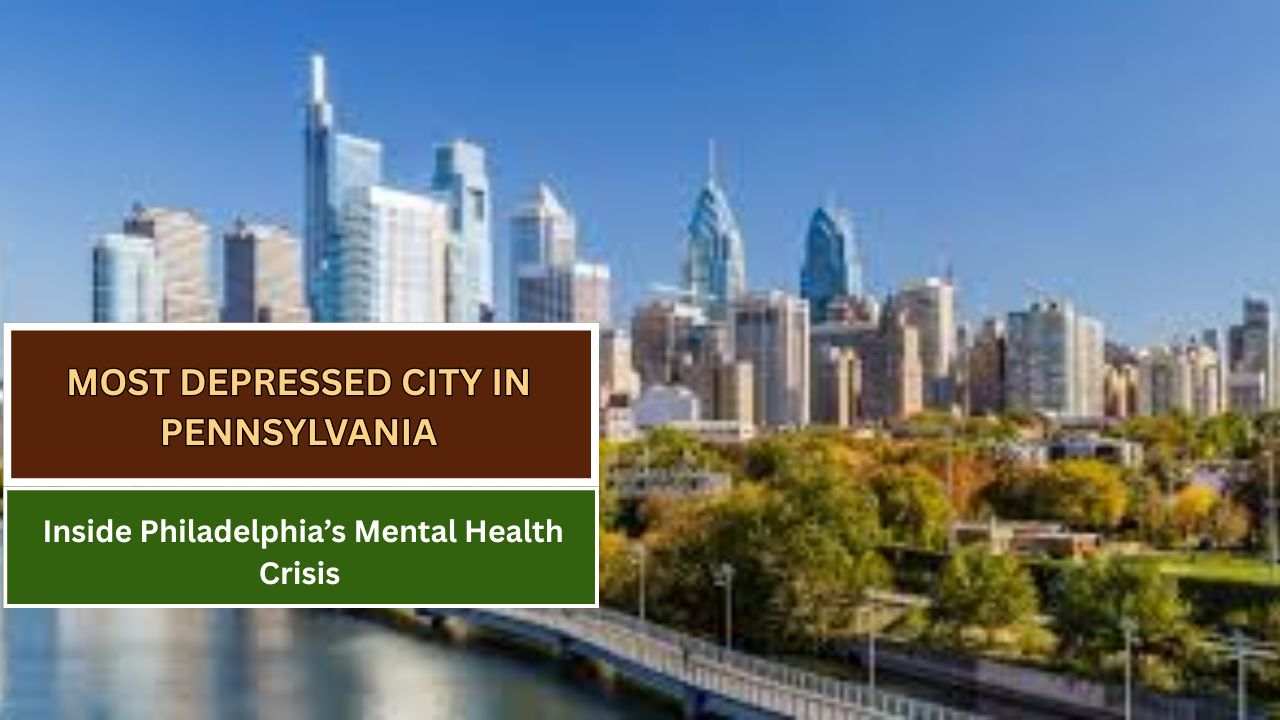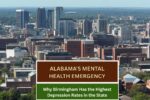Philadelphia, Pennsylvania’s largest city, has found itself grappling with a difficult title in recent years: the most depressed city in the state. Studies and surveys from trusted national and local organizations reveal that mental health challenges—fueled by economic hardship, social inequality, and systemic issues—have contributed to unusually high levels of depression among its residents.
High Depression Rates in Philadelphia
According to a comprehensive analysis by CEUfast, Philadelphia has one of the highest depression rates in the United States, with a staggering 22.6% of the population reportedly affected. This places it significantly above the national average, underlining an urgent mental health crisis.
The state of Pennsylvania itself faces growing mental health concerns. Recent data compiled by Innovo Detox shows that Philadelphia County recorded over 94,000 adult depression cases in 2023—more than any other county in the state.
Unhappiness Rankings and Social Struggles
In a 2025 study conducted by WalletHub, Philadelphia was ranked as the unhappiest city in Pennsylvania, citing high rates of depression, limited access to recreational facilities, long work hours, and low income growth as key contributors. These social indicators align closely with depression prevalence, painting a concerning picture for policymakers and health professionals.
Local coverage by iHeartRadio reinforces this narrative, spotlighting Philadelphia’s ongoing mental health struggles and connecting them to broader quality-of-life concerns such as housing instability, public safety, and job dissatisfaction.
Other Pennsylvania Cities Also Affected
Philadelphia may top the list, but other cities across Pennsylvania are not far behind in mental health-related challenges.
Scranton
A study jointly conducted by Harvard University and the University of British Columbia, reported by WHYY, ranked Scranton as the least happy metropolitan area in the United States. Residents cited low life satisfaction, limited opportunities, and a stagnant economy.
Erie
Erie came in as the third least happy city in the same study. Despite its scenic lakeside views and affordable cost of living, the region struggles with economic downturns and low community engagement—both of which are risk factors for depression.
Reading
The city of Reading has been in economic decline for over a decade, largely due to the collapse of its manufacturing sector. A 2011 article from The New York Times labeled Reading as the most miserable city in America. That reputation continues to echo in updated assessments, such as one by 947BOBFM, highlighting high unemployment and poverty rates.
Pittsburgh
Once described as one of the unhappiest cities in the U.S. by CBS News, Pittsburgh has seen improvements in recent years. The city ranked 61st out of 182 in WalletHub’s 2025 happiness index, suggesting positive developments in emotional well-being, social support, and economic opportunity.
Addressing the Crisis
Mental health experts and policymakers agree that the root causes of urban depression are deeply interconnected. Public health advocates call for a multifaceted approach that includes:
- Increased mental health funding: More support is needed from agencies like the Pennsylvania Department of Human Services.
- Accessible therapy services: Through community clinics and school-based interventions.
- Workplace reforms: Promoting work-life balance and reducing stress-induced illnesses.
Individuals seeking support can access free or subsidized mental health services through the Substance Abuse and Mental Health Services Administration (SAMHSA) or the City of Philadelphia’s Department of Behavioral Health.
Conclusion
Philadelphia’s mental health challenges reflect a broader crisis unfolding in urban centers across the state. While other cities like Scranton, Erie, and Reading are not far behind in unhappiness metrics, Philadelphia stands out due to its sheer population size, high volume of depression diagnoses, and limited coping infrastructure. To reverse this trend, coordinated public health action and local investment in community well-being are more urgent than ever.
This article has been carefully fact-checked by our editorial team to ensure accuracy and eliminate any misleading information. We are committed to maintaining the highest standards of integrity in our content.

Outside of work, he enjoys playing chess, following cricket, and writing short stories. His commitment to integrity and in-depth analysis strengthens OTE News’ mission of providing trustworthy journalism.




